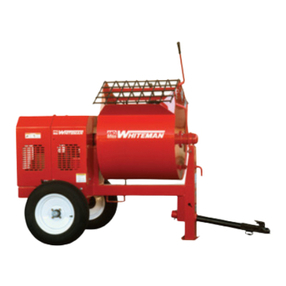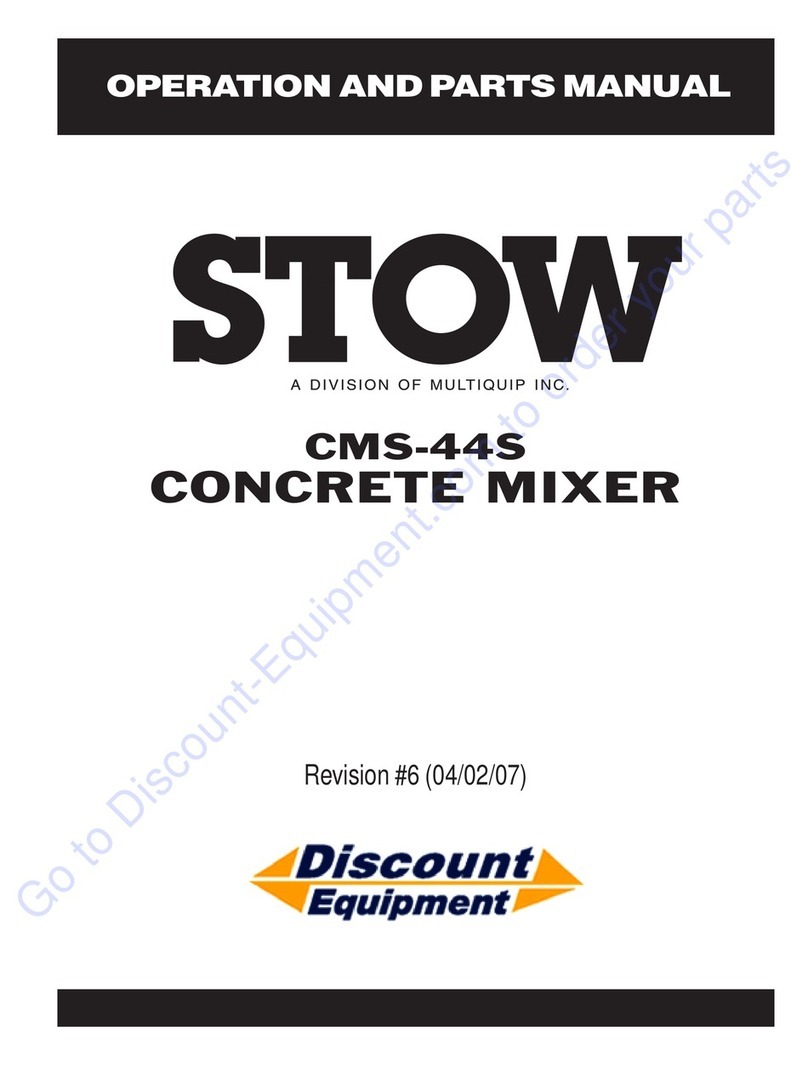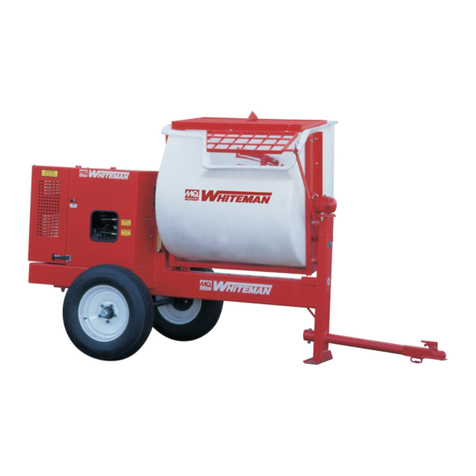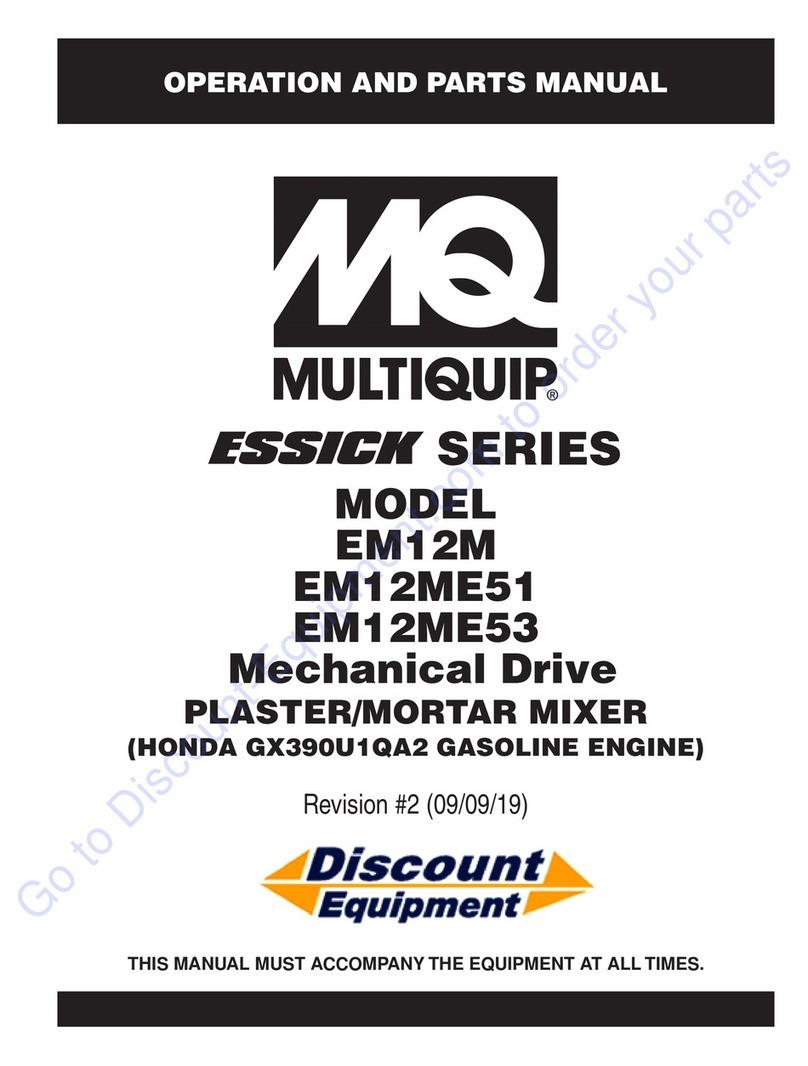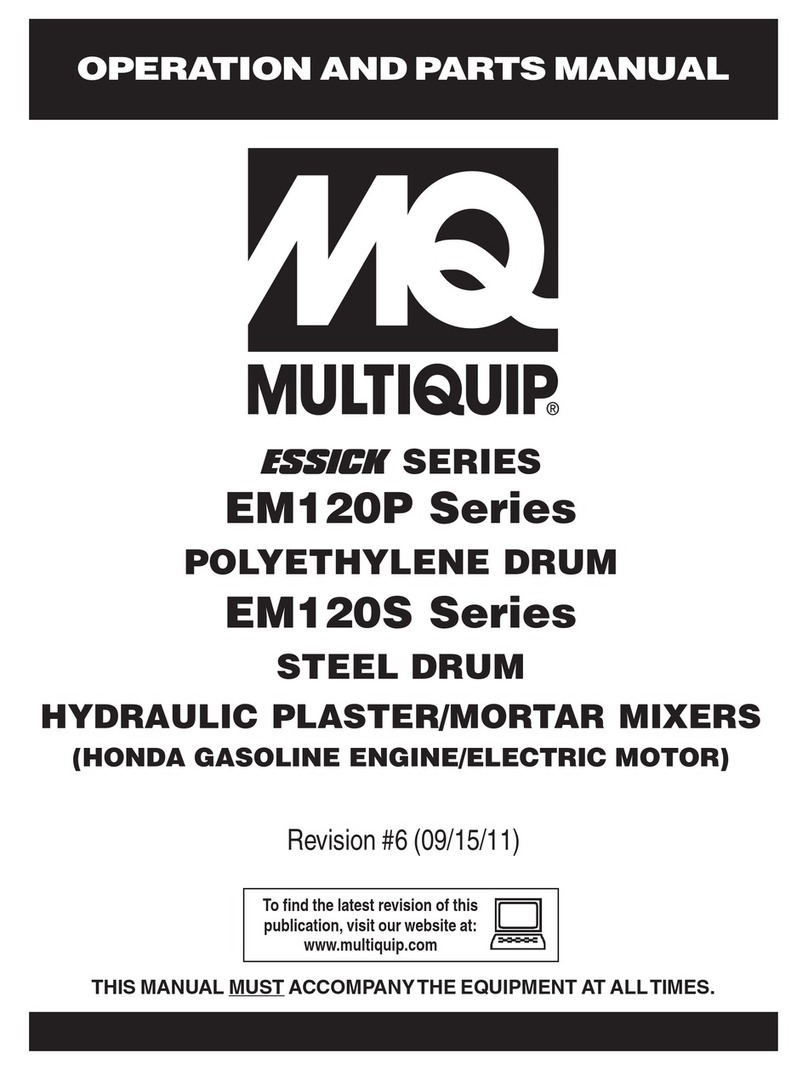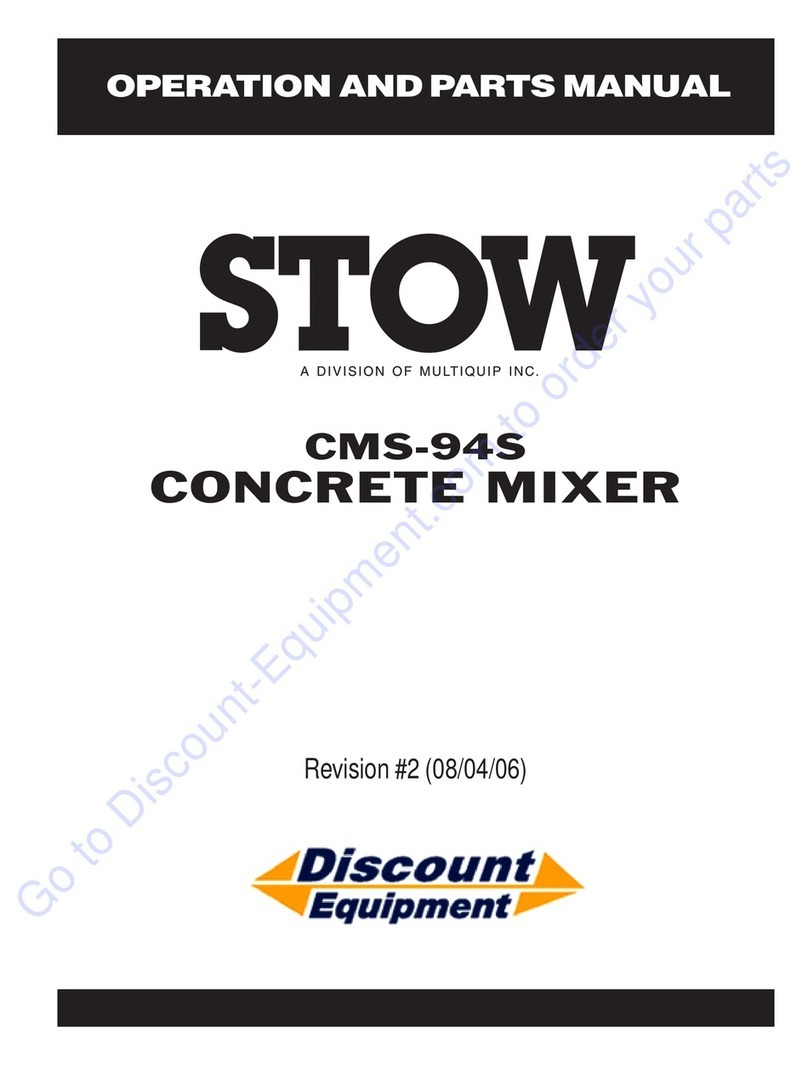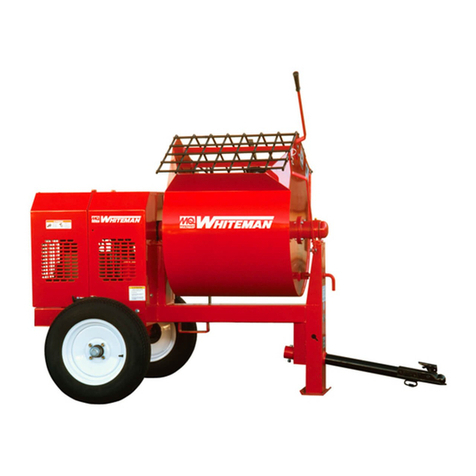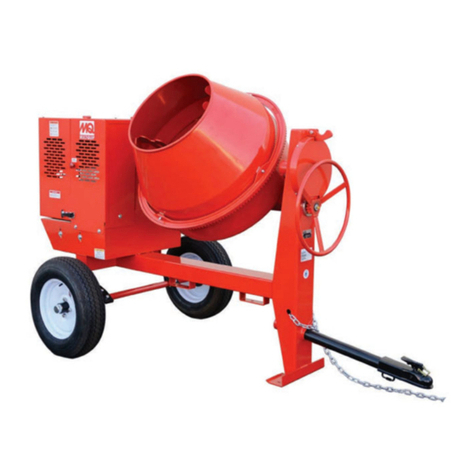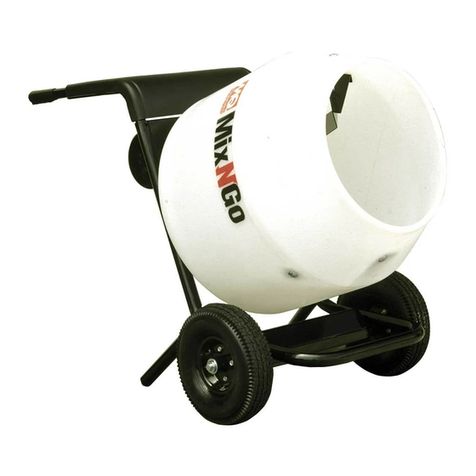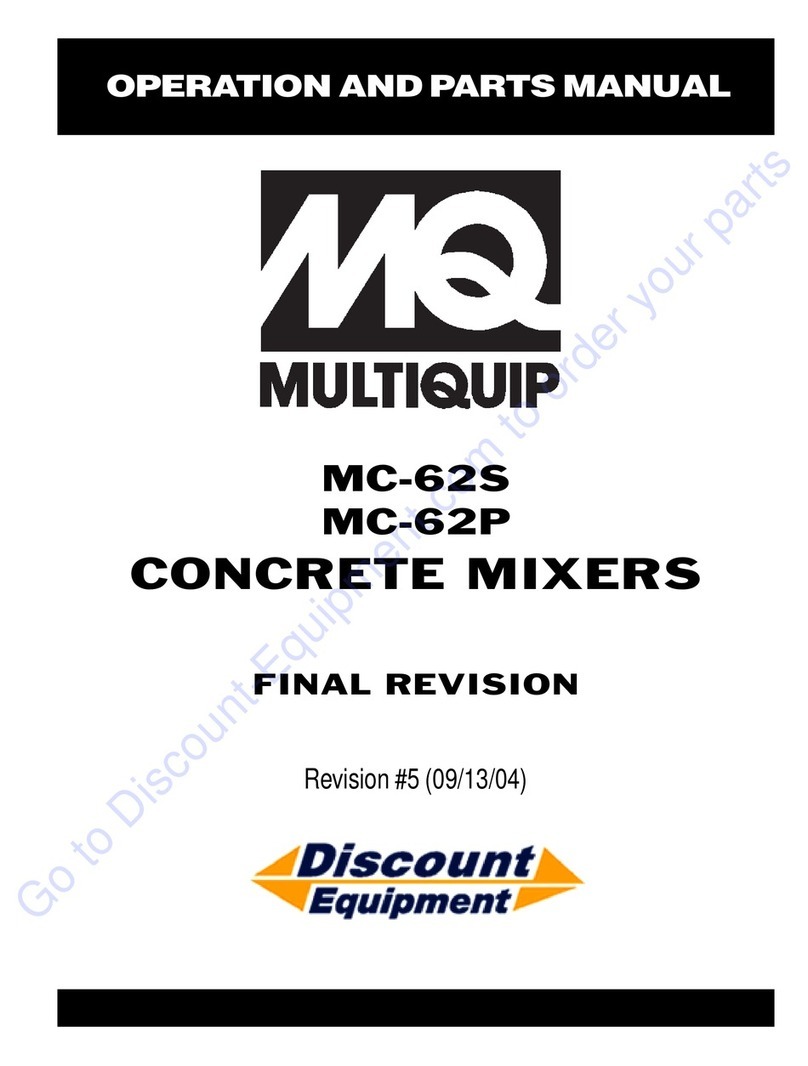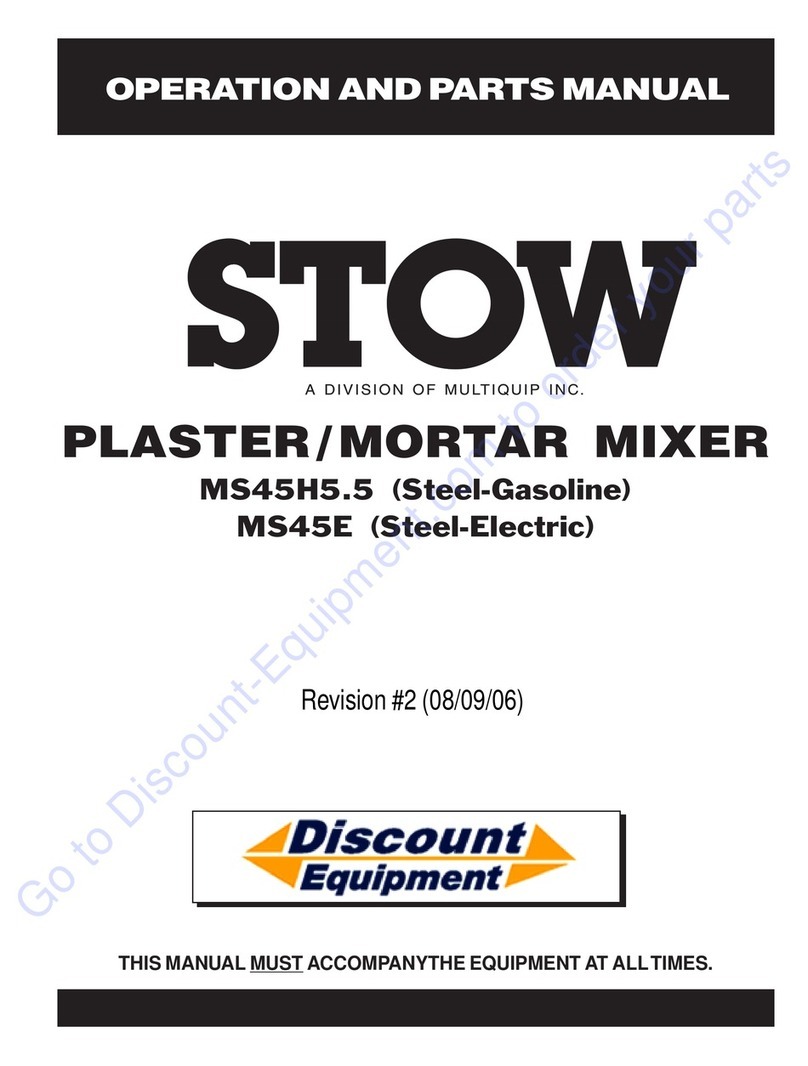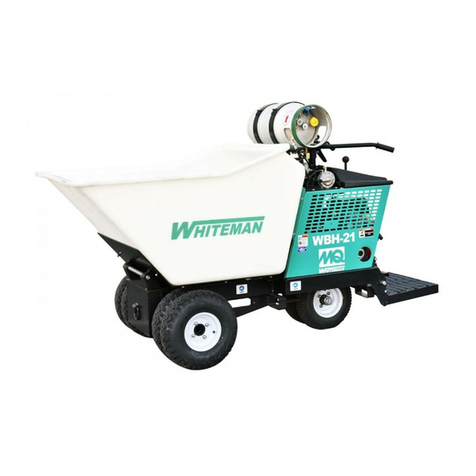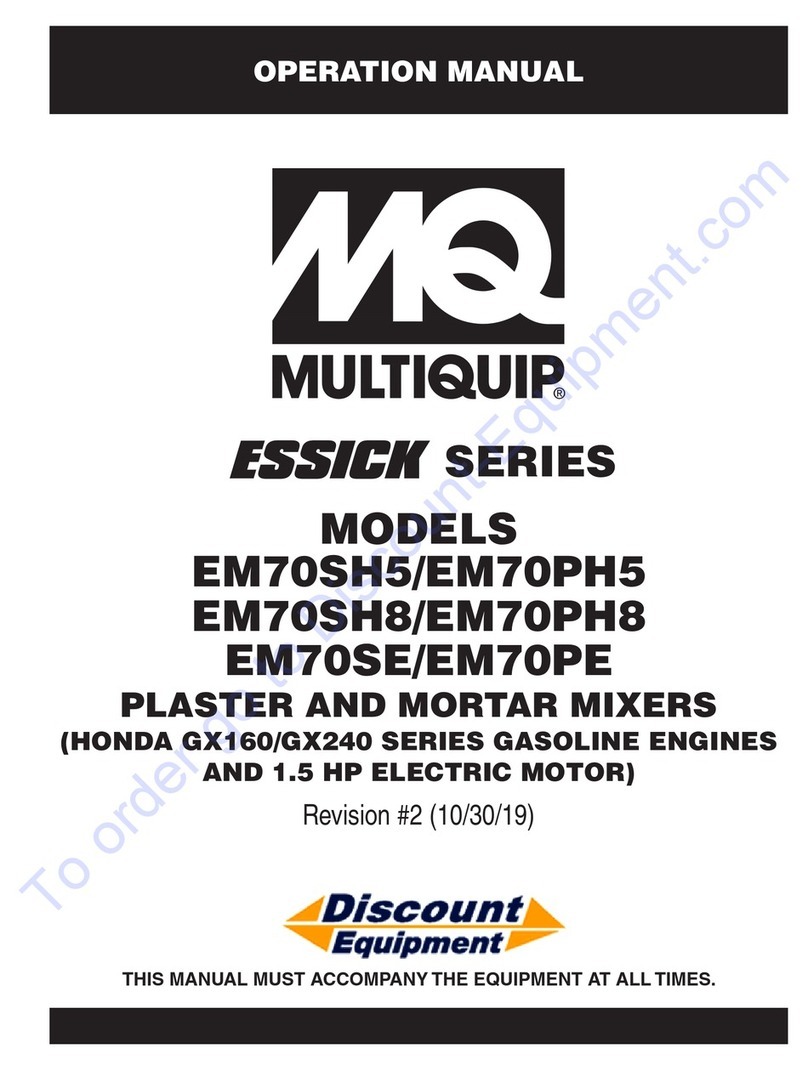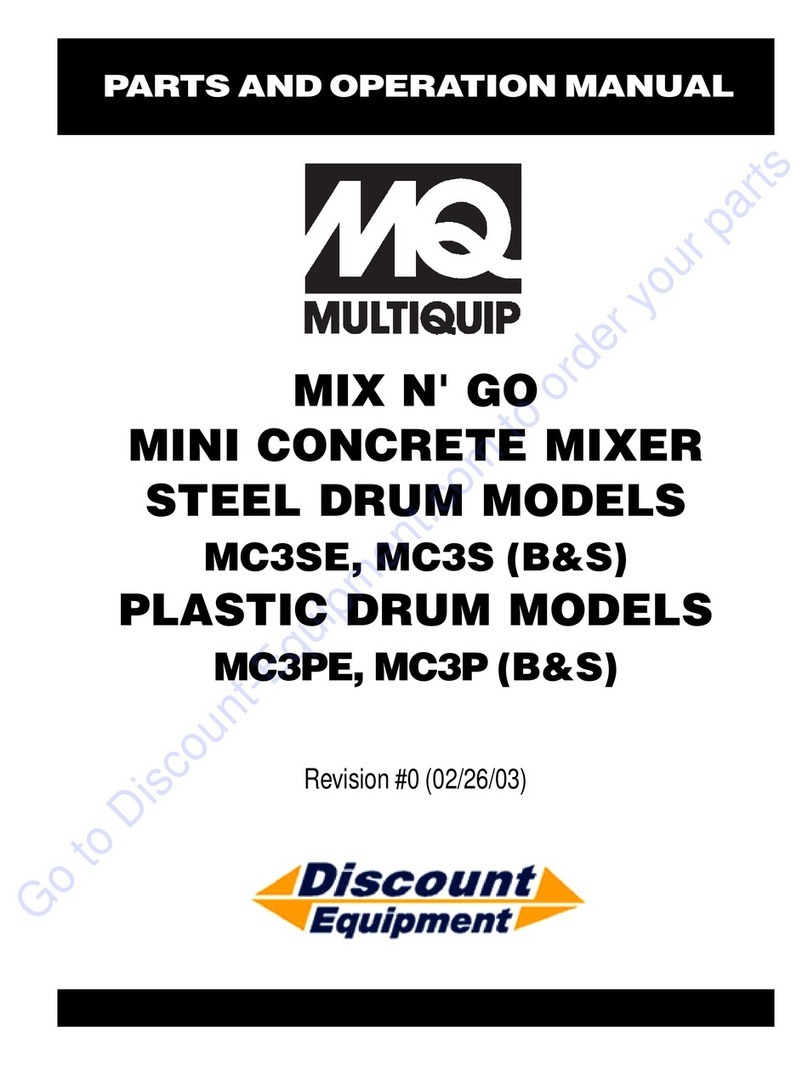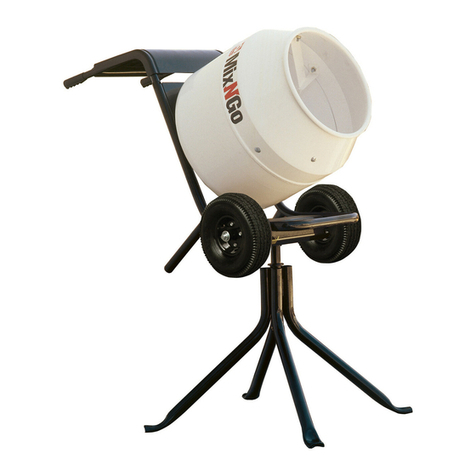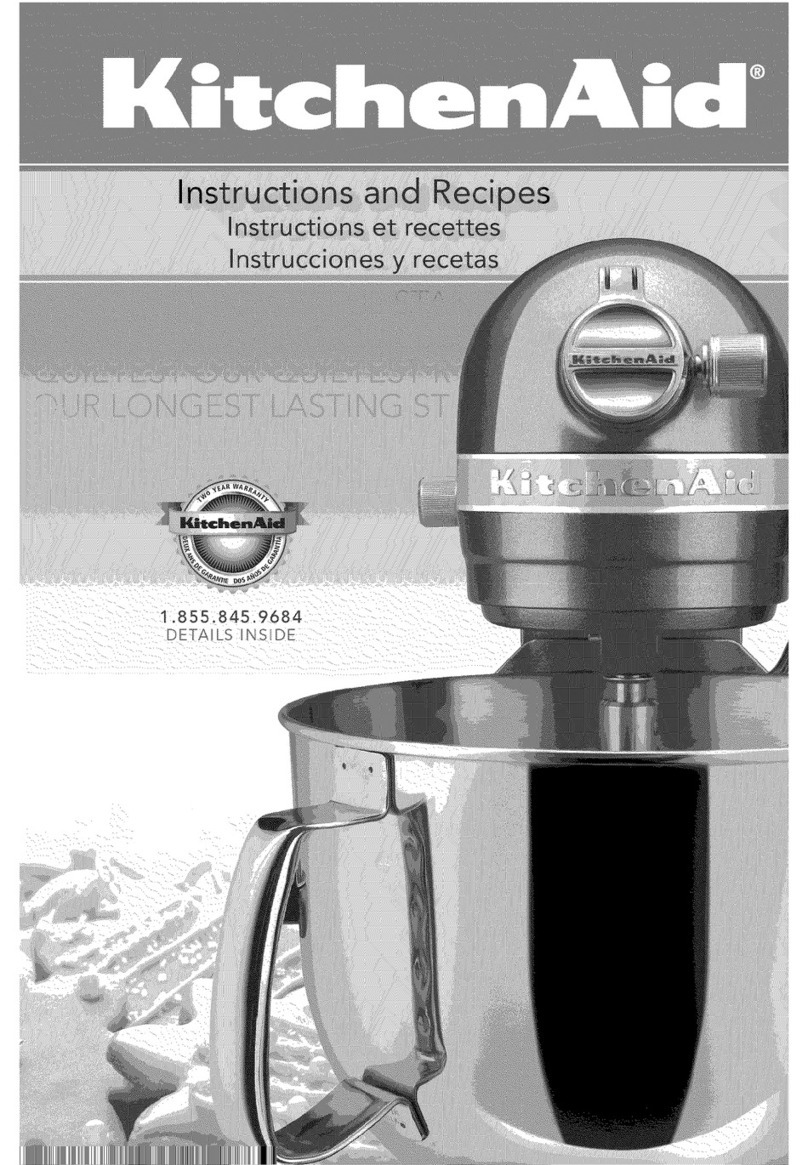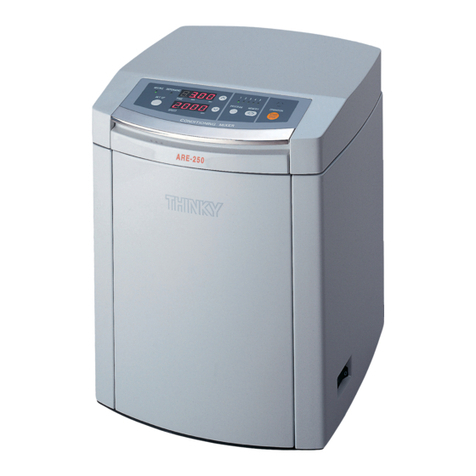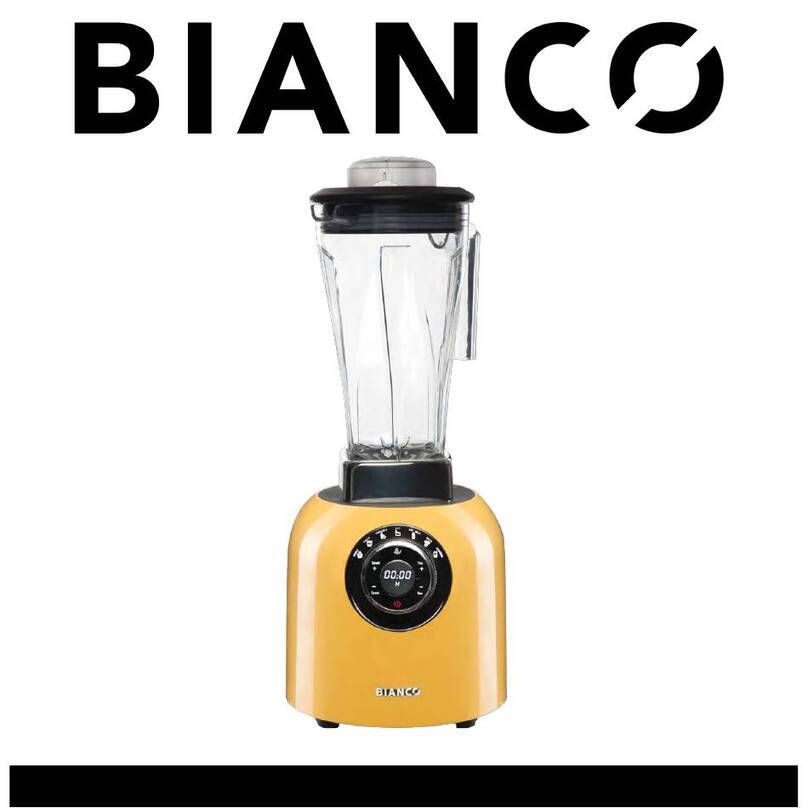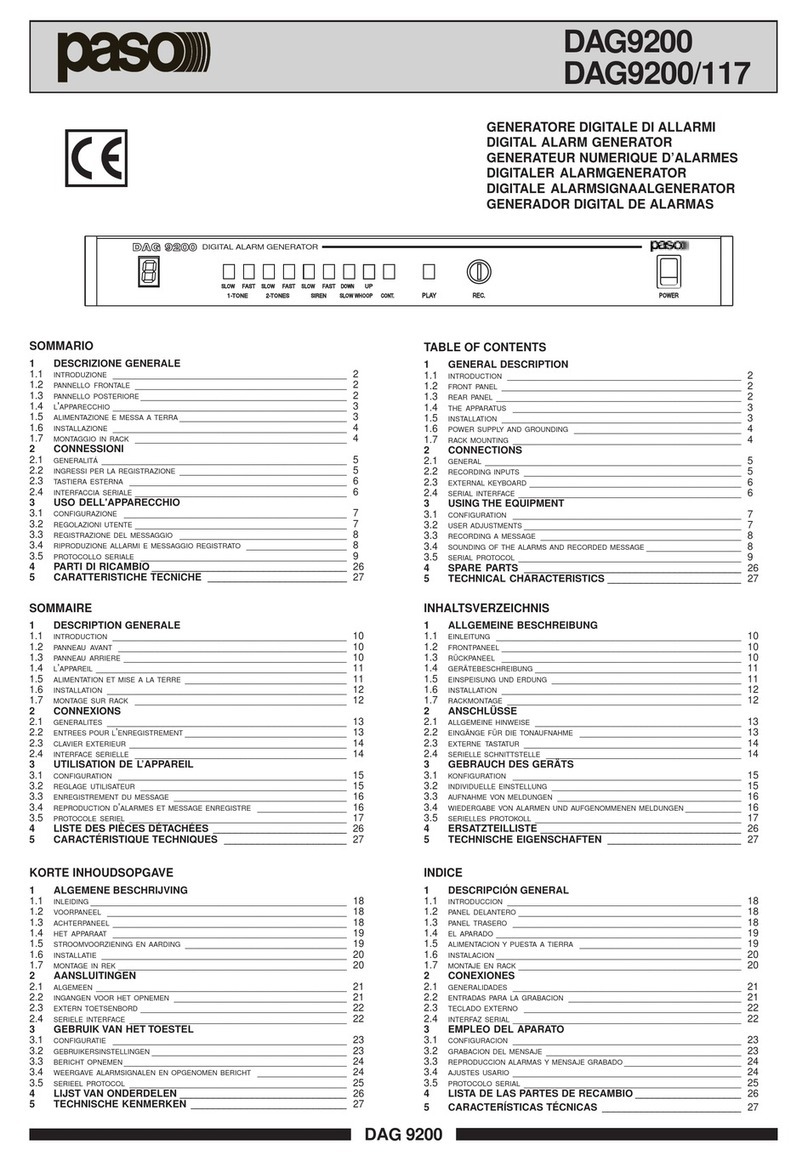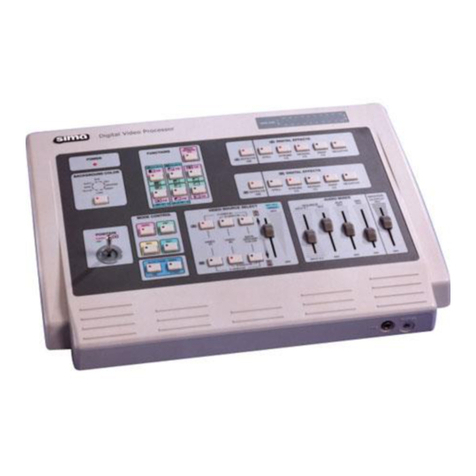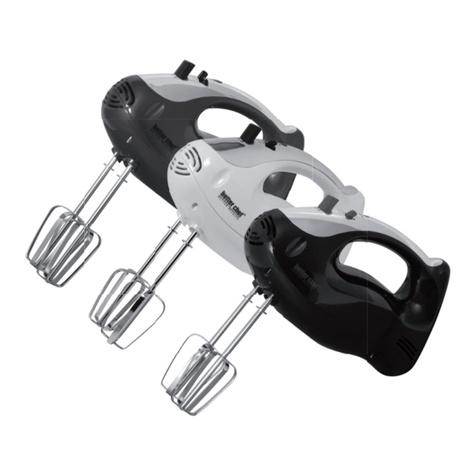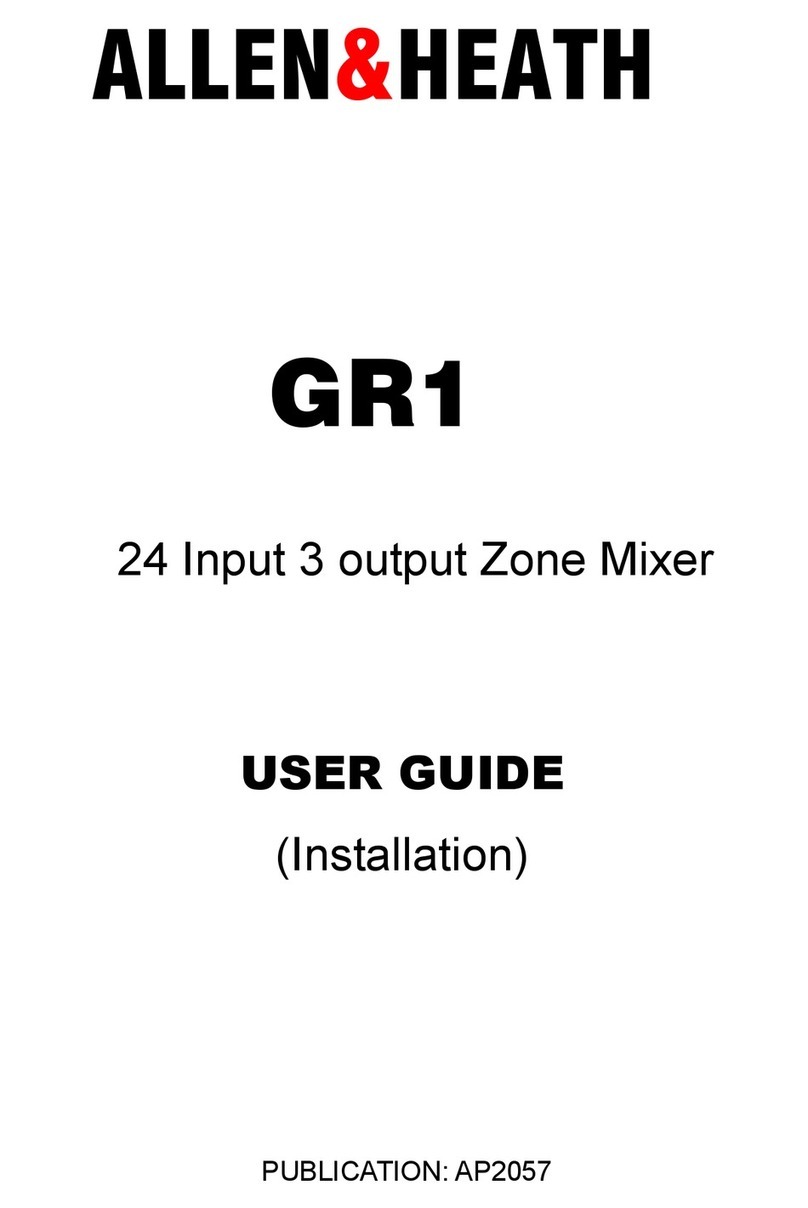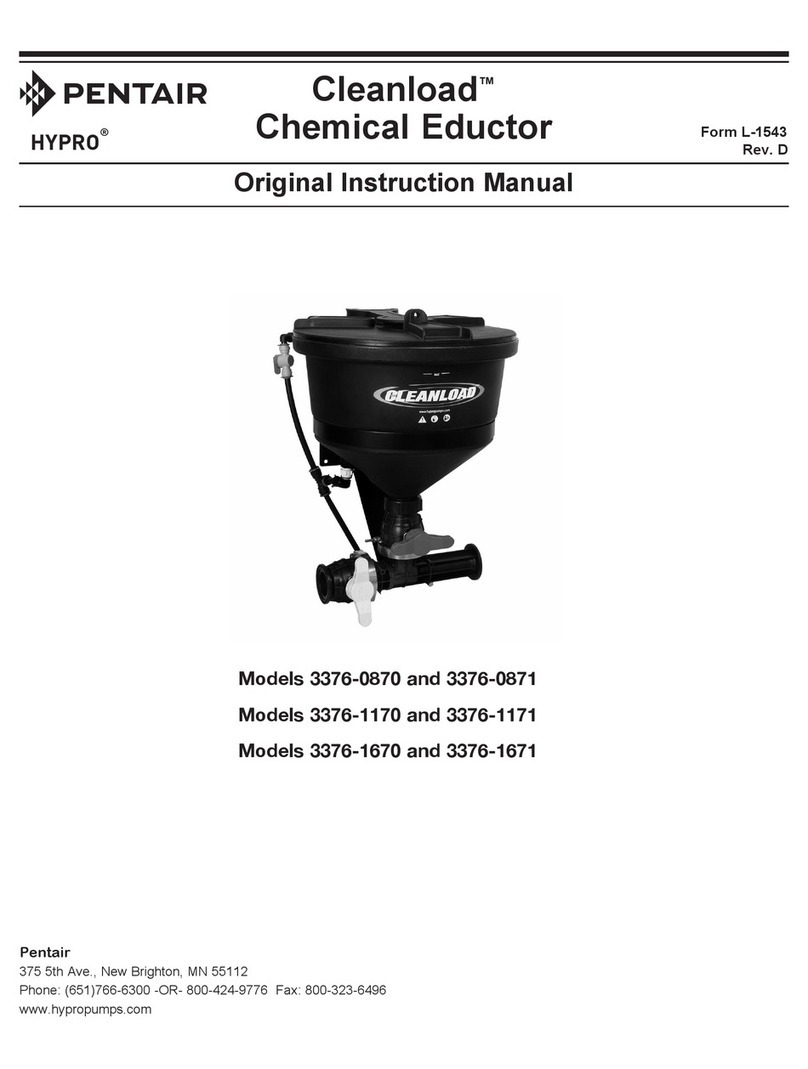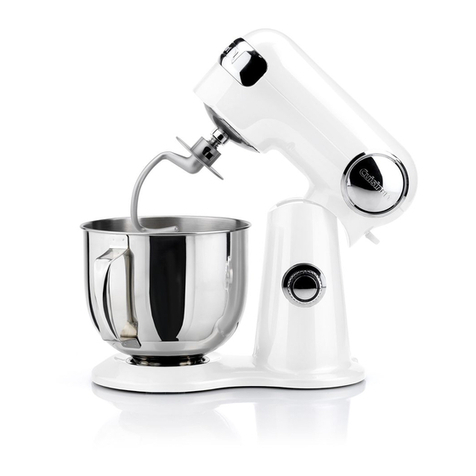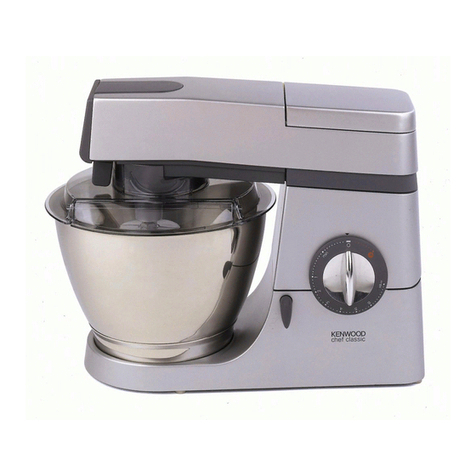
PAGE 10 — EM-90 PLASTER/MORTAR MIXER — OPERATION MANUAL — REV. #2 (12/11/06)
EM-90 PLASTER/MORTAR MIXER — RULES FOR SAFE OPERATION
Thefollowingsafetyguidelinesshouldalways be used when
operating the EM-90 plaster and mortar mixer:
GENERAL SAFETY
■
DO NOT operate or service this
equipment before reading this entire
manual.
■
Thisequipment should not beoperated by persons under
18 years of age.
■
NEVER operate this equipment without proper protective
clothing,shatterproof glasses, steel-toedboots and other
protective devices required by the job.
■
High Temperatures – Allow the
engine to cool before adding fuel or
performing service and maintenance
functions. Contact with
hot!
components can cause
serious burns.
■
The engine section of this mixer requires an adequate
free flow of cooling air.
NEVER
operate the mixer in any
enclosed or narrow area where free flow of the air is
restricted. If the air flow is
restricted it will cause serious
damagetothemixerorengine
and may cause injury to
people. Remember the
mixer's engine gives off
DEADLY
carbon monoxide
gas.
■
ALWAYS refuel in a well-ventilated area, away from
sparks and open flames.
DANGERDANGER
DANGERDANGER
DANGER
Failure to follow instructions in this manual may lead to
serious injury or even death! This equipment is to be
operated by trained and qualified personnel only! This
equipment is for industrial use only.
■
NEVER operate this equipment under the influence of
drugs
or
alcohol
.
NEVER!starttheengineorengagethepaddlearmswhen
the drum is in the discharge (down) position.
WARNINGWARNING
WARNINGWARNING
WARNING
Read this manual!
Starting the Mixer Engine
■
NEVER touch the hot exhaust
manifold, muffler or cylinder. Allow
these parts to cool before servicing
engine or mixer.
■
ALWAYS wear proper respiratory (mask),
hearingandeyeprotectionequipment when
operating the mixer.
■
NEVER place hands inside the drum while the blades are
rotating.
■
Whenever necessary, replace nameplate, operation and
safety decals when they become difficult read.
■
Manufacture does not assume responsibility for any
accident due to equipment modifications.
■
NEVER use accessories or attachments, which are not
recommended by Multiquip for this equipment. Damage
to the equipment and/or injury to user may result.
■
NEVER operate this equipment when not
feeling well due to fatigue, llness or taking
medicine.
■
NEVERoperatethemixerinanexplosive
atmosphere or near combustible
materials. An explosion or fire could
result causing severe
bodily harm or
even death.
■
Topping-off to filler port is dangerous, as it tends to spill
fuel.
■
Stop the engine when leaving the mixer unattended.
■
Block the unit when leaving or when using on a slope.
■
Maintain this equipment in a safe operating condition at
all times.
■
ALWAYS use extreme caution when
working with flammable liquids. When
refueling, stop the engine and allow it to
cool.DO NOT
smoke
aroundor near the
machine. Fire or explosion could result
from fuel vapors, or if fuel is spilled on a
hot engine.
To order go to Discount-Equipment.com
